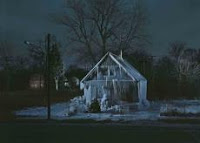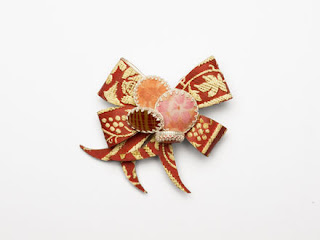 This week we had a visitor, a Moving Image tutor and graduated filmmaker Eldon Booth who shared to the class a bit about his works as a filmmaker. One of his methods he explains is his use of facts and fiction within his films, portraying families real-life photographs into a fiction story and interviews in an untrue documentary style film.
This week we had a visitor, a Moving Image tutor and graduated filmmaker Eldon Booth who shared to the class a bit about his works as a filmmaker. One of his methods he explains is his use of facts and fiction within his films, portraying families real-life photographs into a fiction story and interviews in an untrue documentary style film.

Eldon mention he got hold of his friend private family albums and was aloud by the family to put them into fiction film story. That's struck me with surprise because the privacy and precious photo-album are and the history content it holds for a family. I wouldn't ask or accept my friends photograph albums because of the history and events the photograph albums have. Eldon transforms these historic and memorable events into a fiction film content. I personally found offensive and disrespectful to his friend family even if he got the family consent because of the public viewing of sum films may upset the family and audiences.http://www.eldonbooth.com/


I found on a couple of true story films on the net that blurs the lines of fiction or facts but Sir Peter Jackson "Heavenly Creature" in 1994 movie, was based on the 1954 Parker/Hulmer murder case was the film that had a lot of real-life contents.The setting and location of the film were the location of the actual events and the selection of the cast were chosen primarily of their physical resemblance to the real-life characters.

Another mix of facts on the film was the scene of Pauline's room has a real picture of Juliet Hulme on the wall and all of voice over dialogue are truthful and directly from the real-life Pauline Parker Diary entries that Jackson used for the film and its the most truthful information he grasp about the Pauline Parker and Juliet Hulmer relationship.
The movie "Elephant" by Gus Van Sant has a mix of facts and fiction. The lighting and sound in the movie gives a realistic feeling and noise with less editing between shots because of the continuity footage with diegetic sound within the setting and location with barely any extra diegetic sound. After looking into the movie a bit more, I found that most of the cast are non-actors and were actual using their real names. In relation to Booth films, The cast in his films are mostly non actors with an exception, his main character. He gave advice about non actors quote "Do not give them much info" stating that its easier to explain by frame.
EXTRA: The film is based on the Columbine High School Massacre. As I watched the film on Thursday, the film remind me of a similar documentary I watched about 2 years ago that I couldn't recalled. As I research into the movie more, I found out that in 2005, three years after the movie was released. The Red Lake High School Massacre was heavily influenced and blamed on the film and the murderer Jeff Weise watched the film 17 days prior to the shooting and according to a friend of Weise, his favorite scene of the film was massacre scene. Some graphic violence in films are at times the pushing factor within someone and is influential in many ways, good or bad.
http://www.youtube.com/watch?v=EZ_yluDQcMA&feature=related Alex and Eric Massacre scene
http://news.bbc.co.uk/2/hi/americas/4382087.stm
 Our guest speaker this week was Kiwi born installation artist Tiffany Singh. With a Maori, Samoan and Indian descent she has explored and exhibited in New Zealand, Samoa and India. "Engagement and participation are two important element to consider when your an Installation artist" is how I have summed up Singh artwork throughout he seminar. But as our lesson for this week being around the use of color. Singh idea of color originated from Hindu/Buddhism religion on chakra and how there are seven colored chakras within living human beings.
Our guest speaker this week was Kiwi born installation artist Tiffany Singh. With a Maori, Samoan and Indian descent she has explored and exhibited in New Zealand, Samoa and India. "Engagement and participation are two important element to consider when your an Installation artist" is how I have summed up Singh artwork throughout he seminar. But as our lesson for this week being around the use of color. Singh idea of color originated from Hindu/Buddhism religion on chakra and how there are seven colored chakras within living human beings.












































 Totally wanted John Morrison to be the main event at Wrestlemania against The Miz.. Hopefully next year Morrison will get his opportunity. Now back to Wrestlemania 27 this year. I've never been this excited about Wrestlemania since 2005 match between Batista vs Triple HHH.. The Rock is gonna the gonna lay it the smack down at Wrestlemania. "IF YOU CAN SMELL WHAT THE ROCK IS COOOKIN!!!!!!!!!!
Totally wanted John Morrison to be the main event at Wrestlemania against The Miz.. Hopefully next year Morrison will get his opportunity. Now back to Wrestlemania 27 this year. I've never been this excited about Wrestlemania since 2005 match between Batista vs Triple HHH.. The Rock is gonna the gonna lay it the smack down at Wrestlemania. "IF YOU CAN SMELL WHAT THE ROCK IS COOOKIN!!!!!!!!!!





